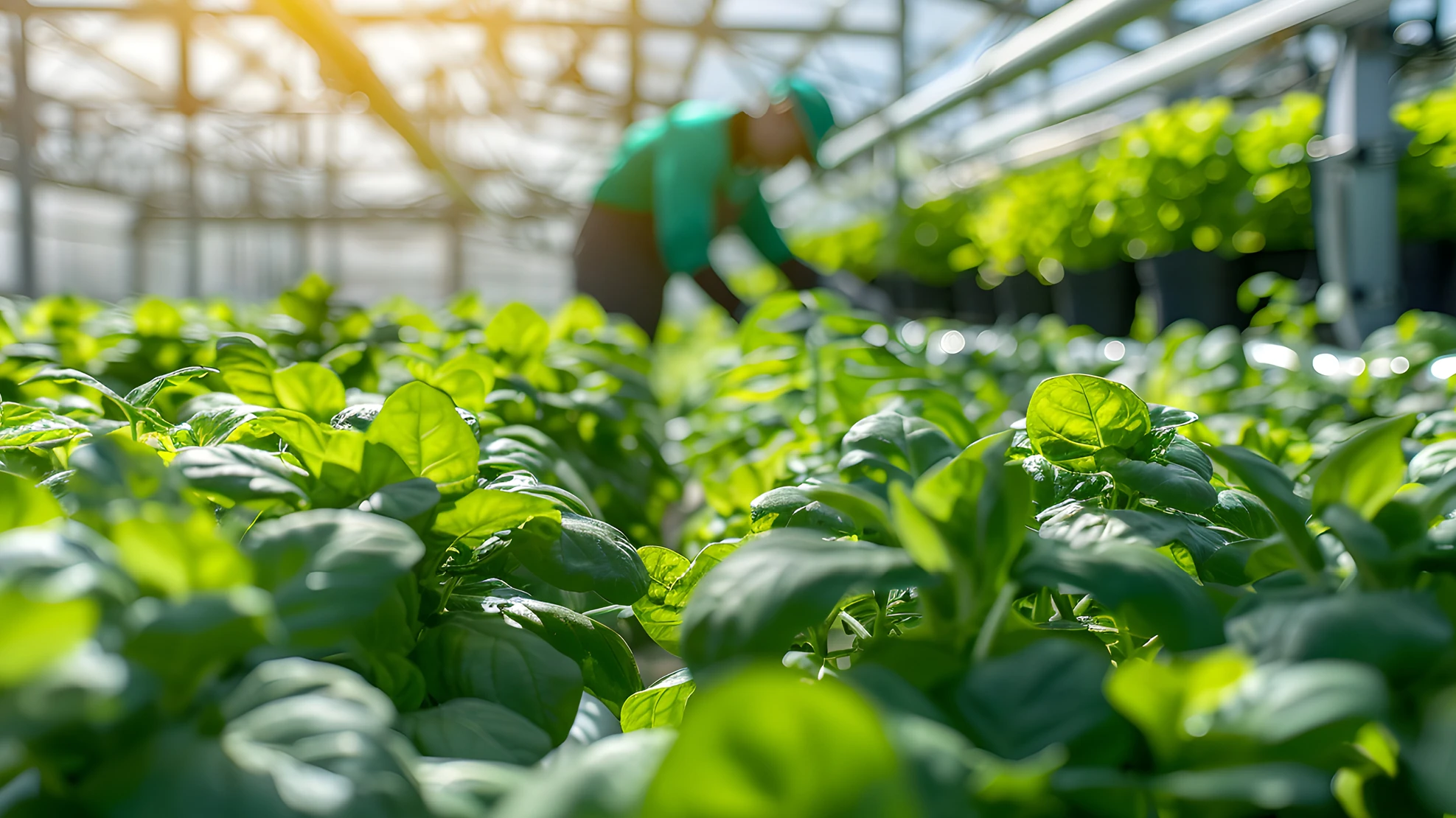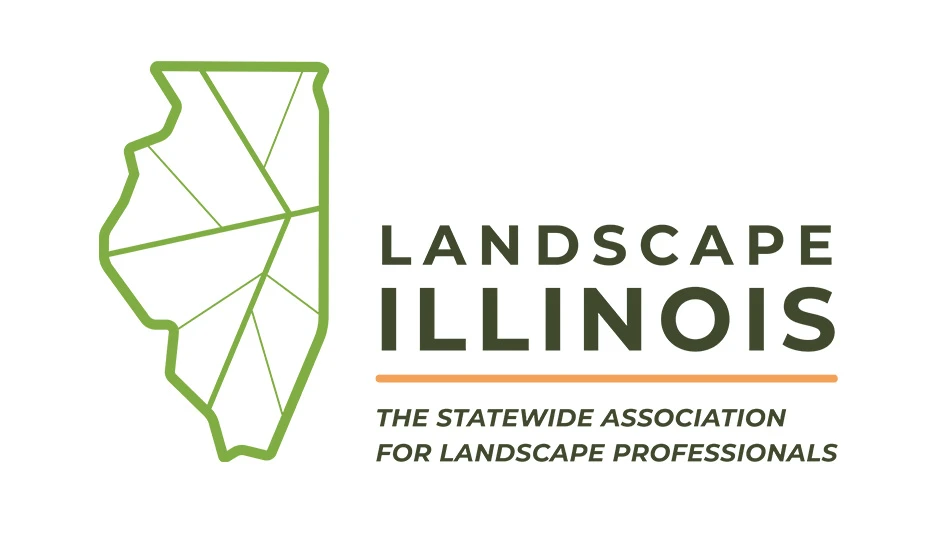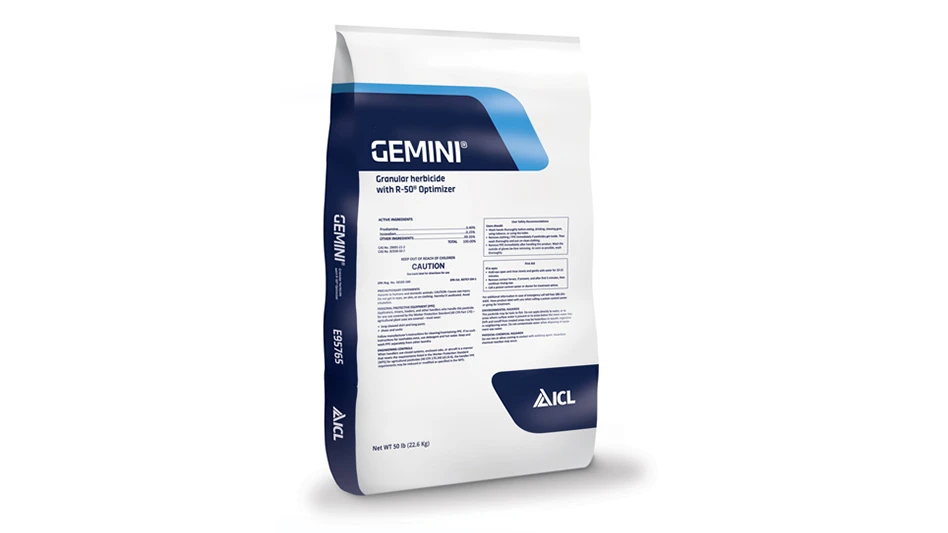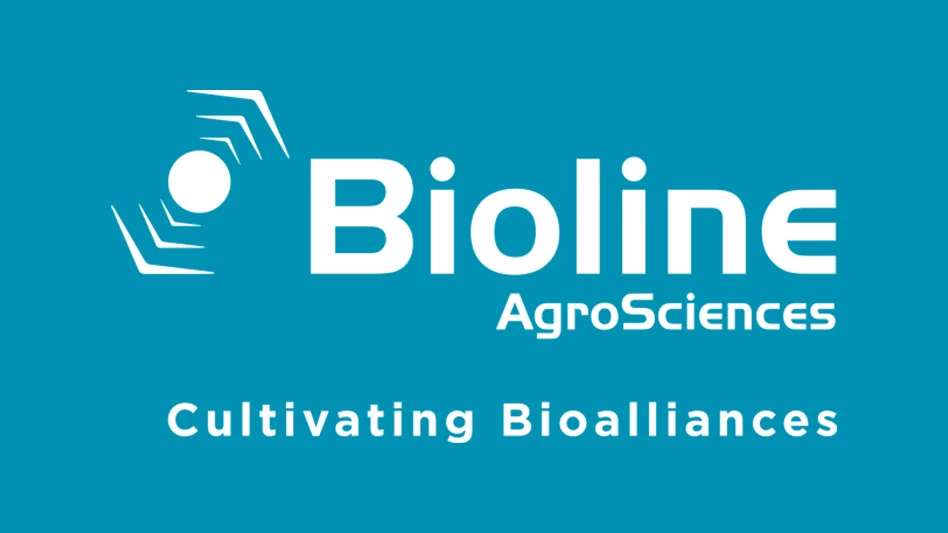Poinsettias are one of the world’s most popular plants, a ubiquitous holiday staple that fills shelves at garden centers and big-box retailers alike. However, a retail impact eclipsing $1 billion doesn’t make poinsettias any less susceptible to a withering lineup of diseases and insects. To stay ahead of damaging pests, growers must scout often for signs of infestations and deploy proper treatments when needed.
Know the disease threats
Botrytis is the most common disease that affects poinsettias, with the threat being higher during propagation and at the end of production. Early infections appear as water-soaked spots on foliage and bracts. A gray, fuzzy mold develops from the spots, providing growers with a sure indication that the disease has established itself. To stay ahead of this costly disease, look out for other Botrytis warning signs, including V-shaped and tan-brown lesions on foliage. Plant wilt is another indicator that Botrytis has invaded a crop, as infected foliage withers and becomes laden with spores.
Poinsettias produced in cooler regions are typically at higher risk of powdery mildew infections. Fungi form white, talcum-like colonies on leaves, stems, flowers and bracts, with spots increasing in size and number if left untreated. Not only does powdery mildew reduce a crop’s aesthetic value, severe or unmanaged infections will eventually cause leaves to discolor and fall off.
“Depending on the region, the most common poinsettia pathogens alongside powdery mildew and Botrytis are Pythium and Rhizoctonia spp. Less common, though not be overlooked, are Phytophthora spp. and scab. Timing is everything when it comes to knowing what to look for and when,” notes Nancy Rechcigl, technical field manager for ornamentals at Syngenta.
“From a foliar disease standpoint, leaf spots caused by Alternaria and Xanthomonas spp. can be problematic early in production, while powdery mildew and Botrytis are challenging during middle and late production,” Rechcigl says.
What of whiteflies?
While scouting for disease, poinsettia growers must also be wary of plant-destroying insect infestations. Whiteflies are the most common damaging insects that affect poinsettias. “Adult and immature whiteflies insert their piercing mouthparts into the plant and extract plant sap, which affects plant vigor,” says Rechcigl.
What makes whiteflies a challenging pest? First, nymphs and eggs can be difficult to find because they often hide on the undersides of leaves. Additionally, whiteflies have a quick life cycle, and according to Rechcigl, female adult whiteflies can lay an average of 160 eggs, which hatch in about five to seven days. The lifecycle from egg to adult is two to three weeks, causing populations of these problematic insects to build quickly, so diligent scouting is critical.


When scouting for whiteflies, look for evidence of black, sooty mold, the result of honeydew secretion from the insects. Consider monitoring the crop with yellow sticky cards, placed just above the plant canopy, to detect adult activity.
“Typically, you would use one card per 1,000-3,000 square feet,” says Rechcigl. “It’s also important to physically check plants regularly for immature stages, looking at the underside of foliage in the lower, middle and upper canopy. A small hand lens with 10X-20X magnification can help with this.”
Along with scouting, whitefly management begins with proper cultural practices. “Employing proper sanitation is the first step toward mitigating initial whitefly populations,” says Stanton Gill, extension specialist in IPM and entomology at the University of Maryland. Growers should clean benches and floors before new plants are placed in the production area. Weed removal is another means of ensuring crop-hungry pests such as whiteflies and mites stay out of your production area. Additionally, it’s vital for growers to inspect unrooted cuttings and plants upon arrival from young plant suppliers.
“For a grower, the critical thing is to have a trust system set up with your supplier,” Gill says. “Suppliers need to keep plants clean because you don’t want to start off with a whitefly problem.”
Make a plan for insect control early
Using an agronomic program with built-in resistance management helps prevent insects and diseases from manifesting during production. A well-structured plan uses plant protection products when problems are first observed or when conditions are most conducive to pest development.
Application and frequency should be based on pest pressure, product activity, your environmental conditions and pest lifecycle. Syngenta has created an agronomic program for poinsettia production that hinges on rotating products with different modes of action for optimal control and resistance management.
Multiple control options including Mainspring® GNL insecticide and Postiva™ fungicide deliver a built-in resistance management approach for insects and diseases, eliminating the need for corrective actions for a high-quality crop. Mainspring GNL — a systemic, non-neonicotinoid that shields crops from chewing and sucking insects such as thrips and whiteflies — contains the active ingredient cyantraniliprole in IRAC Group 28.
“Applied as a spray or drench, the insecticide works primarily through ingestion, acting like a shield after the pest ingests the ‘AI’,” says Rechcigl. “Whiteflies and other insects stop feeding within minutes, leading to mortality and keeping pest populations from growing to damaging levels.”
“While Mainspring GNL can be used as a spray, we recommend using it as a drench two to three weeks after the poinsettia crop is pinched. Because whitefly nymphs often hide on the underside of the foliage, it’s difficult to control whiteflies with spray applications alone. Systemic treatments are preferred and most successful because the product will move into the canopy as the plant grows, providing protection throughout the production period,” Rechcigl adds.
Although Mainspring GNL is a strong option for whitefly control, growers also have natural options to eliminate these insect pests. Gill suggests dunking cuttings in an EPA-approved oil-based pesticide, which disrupts the metabolism of insect eggs as well as the ability of some insects to feed.

“The dunking method is for unrooted cuttings, although some poinsettias come in plug stage, so you can dunk those, too,” says Gill.
Entomopathogenic nematodes, meanwhile, serve as biological control organisms effective against various above-ground insects. Hypoaspis miles — a type of soil-dwelling mite — feeds upon insect pupae to provide pest control when used preventively. Mainspring GNL can be used in an IPM program with these biologicals as it has demonstrated good compatibility with them.
Use multiple MOAs for optimal disease management
The most recent innovation in plant protection from Syngenta is Postiva fungicide, which provides broad-spectrum control of Botrytis, Fusarium, powdery mildew and other difficult-to-control diseases. Postiva is powered by two modes of action in FRAC Group 7 and FRAC Group 3. It moves from the leaf surface into the wax layer upon application, becoming rainfast and creating a protective coating. Postiva is generally applied as a foliar spray or as a soil drench and can be used in chemigation and auto cold-fogging systems.
“Postiva is proven to control more than 40 fungal diseases, while delivering additional suppression of bacterial diseases. For poinsettias, early application can thwart leaf spot diseases caused by Xanthomonas spp. and Alternaria spp. that commonly occur in the south. Later applications are more useful for stopping powdery mildew and Botrytis found in northern production areas,” Rechcigl says.

As fungal pathogens can build resistance to products with the same mode of action during repeated use, it is important to rotate Postiva with other effective fungicides from other FRAC Groups. A poinsettia agronomic program must consist of no more than two sequential applications per crop before switching to another effective product with a different mode of action.
“A well-structured program will consider how best to utilize the products’ strengths and leverage modes of action when they will provide the maximum benefit,” says Rechcigl. “It also includes a resistance management strategy so no one mode of action is overused and applications stay within label allowances.”
Rechcigl has seen positive disease and insect control outcomes for growers using the Syngenta program during poinsettia production.
“The programs provide a framework on how to position products that will prevent the primary and secondary problems that could affect the crop,” Rechcigl says. “With resistance management and label compliance built into these programs, they’re for growers to follow and provide a framework for success.”
Follow Syngenta on Facebook @SyngentaOrnamentalsUS and YouTube @SyngentaOrnamentals for the latest news and product information.
All photos are either the property of Syngenta or are used with permission.
© 2022 Syngenta. Important: Always read and follow label instructions. Some products may not be registered for sale or use in all states or counties and/or may have state-specific use requirements. Please check with your local extension service to ensure registration and proper use. GreenCast®, Mainspring®, Postiva™ and the Syngenta logo are trademarks of Syngenta Group Company. All other trademarks are the property of their respective owners.

Explore the July 2022 Issue
Check out more from this issue and find your next story to read.
Latest from Greenhouse Management
- 2025 Proven Winners Horticulture Scholarship applications now open
- How to improve inventory and shipping management in the greenhouse
- Leading Women of Horticulture: Anna Ball, Ball Hort, and Terri McEnaney, Bailey Nurseries
- GM CEA HERB Part 2: A guide to increasing the sowing density of culinary herbs
- GM CEA HERB Part 1: Best practices for producing culinary herbs in controlled environments
- USDA fires experts on invasive pests, including Asian citrus psyllid, chilli thrips
- CEA Alliance celebrates bipartisan introduction of Supporting Innovation in Agriculture Act
- Dümmen Orange North America celebrating 25th anniversary in 2025







